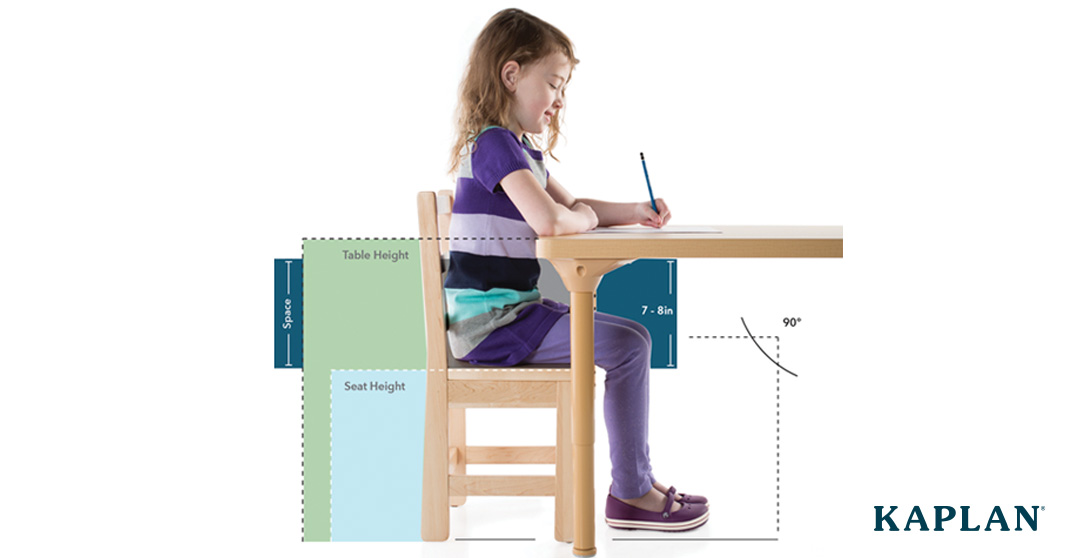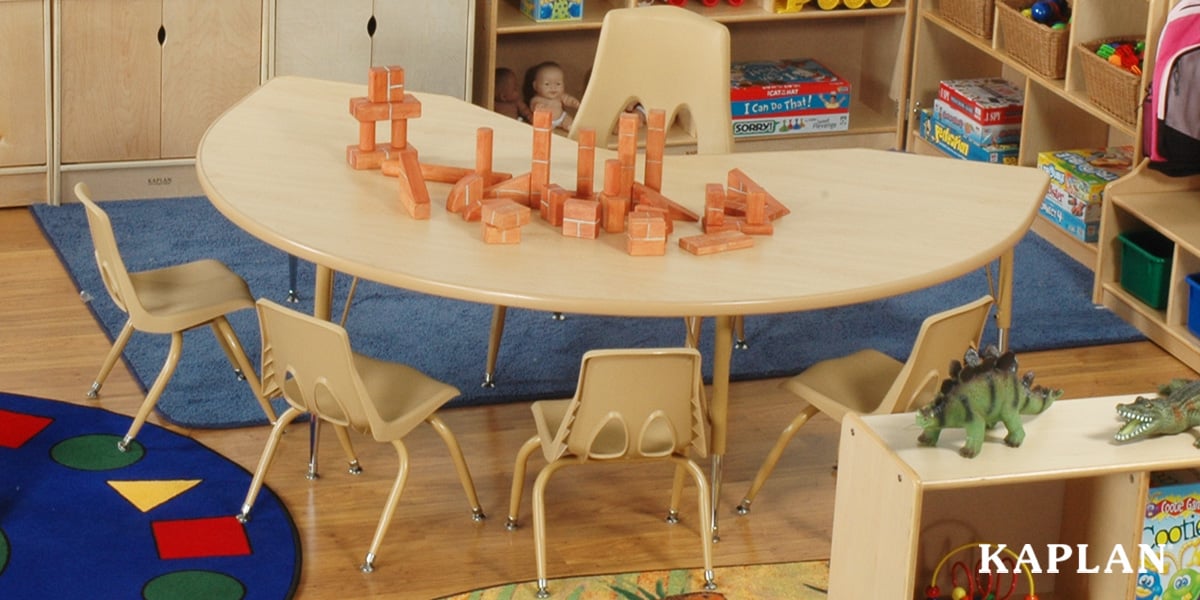As an educator, you know that it is essential (and often required) to have durable, safe chairs in your classroom. There are several options in the market for classroom seating, and we offer quite a few that can meet your needs for durability and longevity.
Here at Kaplan, we have been sourcing and providing many different forms of classroom chairs for decades. During this time, we have evaluated many different types, materials, and options. This experience has given us lots of knowledge about everything related to classroom chairs. In this article, we discuss two of the most common types of seating and suggest the best ways to extend their life!
Types of Classroom Seating: Classroom Chairs and Vinyl Chairs
There are many types of classroom chairs. Two common ones are classroom chairs and vinyl chairs. We define classroom chairs as chairs that children sit in while eating at a table or doing an activity. Classroom chairs are typically made of wood or plastic, and the plastic ones have metal legs.
Vinyl chairs are small, soft armchairs that give children a place to relax and socialize. They are a great alternative to leather in terms of longevity and durability, and they also look modern. These chairs give children a sense of place and can go a long way in helping them feel welcome in the classroom.

5 Facts About Classroom Chairs and Vinyl Chairs that You Need to Know
1. Vinyl on Vinyl Chairs Can Rip
Because of natural wear and tear, it is common for vinyl to deteriorate and rip over time. Unfortunately, there is not much you can do to prevent this kind of ripping as it’s a natural part of the aging process. A vinyl chair can also rip if a child picks at it long enough or cuts the material with something like scissors.
To preserve the life of your vinyl chairs, prevent children from using sharp objects, like scissors or pencils, around these types of materials. We know you want to provide a welcoming environment for your children, so it is essential to do what is necessary to have furniture that facilitates this environment.
2. Certain Cleaners Damage Wooden Chairs
Cleaning products like bleach will quickly damage the finish of wooden chairs. Wooden chairs often come with cleaning instructions, and it is best to follow them so that you extend the life of the chair instead of reducing it!
We recommend that you clean all wooden chairs with mild soap and water. If your center requires the use of bleach or other heavy-duty sanitizers, you should mix them with water to lessen their impact on the wood.

3. Excessive Weight Can Strain Chairs and Cause Them to Break
Classroom chairs can break if they are used in improper ways, such as if a teacher stands on them to get the class’s attention. To prevent classroom chairs from breaking, use them in the ways they are intended to be used. If you are going to sit in a classroom chair, remember that the weight limit for most early childhood classroom chairs is 150 pounds.
4. Classroom Chairs May Scuff Floors
This is almost always preventable or easily cleaned, but it is still worth mentioning because it can happen if you do not protect the floor from chair feet. Scuffing is particularly risky in classrooms with vinyl flooring because vinyl is very vulnerable to scuffing.
Fortunately, you can put glides on chairs to prevent them from scuffing. If you think you might need these, here are some 'quiet chair socks' that Kaplan sells. These glides come pre-cut so that you can put them right on the chair. This will save you the trouble of cutting tennis balls yourself, which can be a time-consuming process if you've got lots of chairs in your classroom.
5. Chairs Might Not Match the Table Height
For classroom chairs, the seat of the chair should be 7-8 inches below the underside of the table because that amount of space enables children to comfortably fit their legs under the table and rest their elbows on the table. If you do not account for this space when buying chairs, your children could bang their legs against the table, leading to perpetual discomfort.
To prevent this from happening, make sure that the chairs you buy are appropriately fitted to your tables. For help determining the right seat height, see this chart on our website that tells you what seat height to buy for different table heights.

Next Steps
With the knowledge that this article has given you, you will be able to get the most extended life out of your chairs and ensure they are comfortable for your children. If you want to purchase chairs for your classroom, check out our classroom seating and social seating options.
Seating goes a long way in making your classroom welcoming and engaging. We want to do whatever we can to help you create that kind of classroom for your children!

